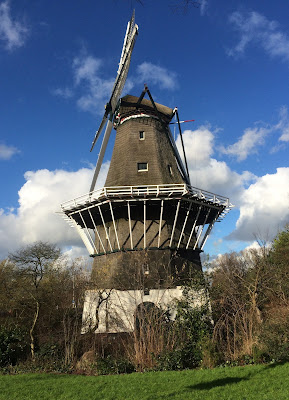"I'm on drugs. I'm, uh, I mean, you know what it is. What's the deal,
man? I like to get small. It's a wild, wild drug. Very dangerous for
kids though, because they get really small. I know I shouldn't get small
when I'm drivin', but, uh, I was drivin' around the other day, you know and a cop pulls me over. And he goes, 'Hey, are
you small?' I said, 'No, I'm tall, I'm tall.' He said, 'Well, I'm gonna
have to measure you.' They've got a little test they give you; it's a
balloon, and if you can get inside of it, they know... you're small. And
they can't put you in a regular cell either, because you walk right
out."
--Steve Martin
HA HA, its really just a very large planter in front of the Jopen brewery (a former church, makes for a religious experience). Leslie and I went in for lunch and drinks, and I really did start to get small.





